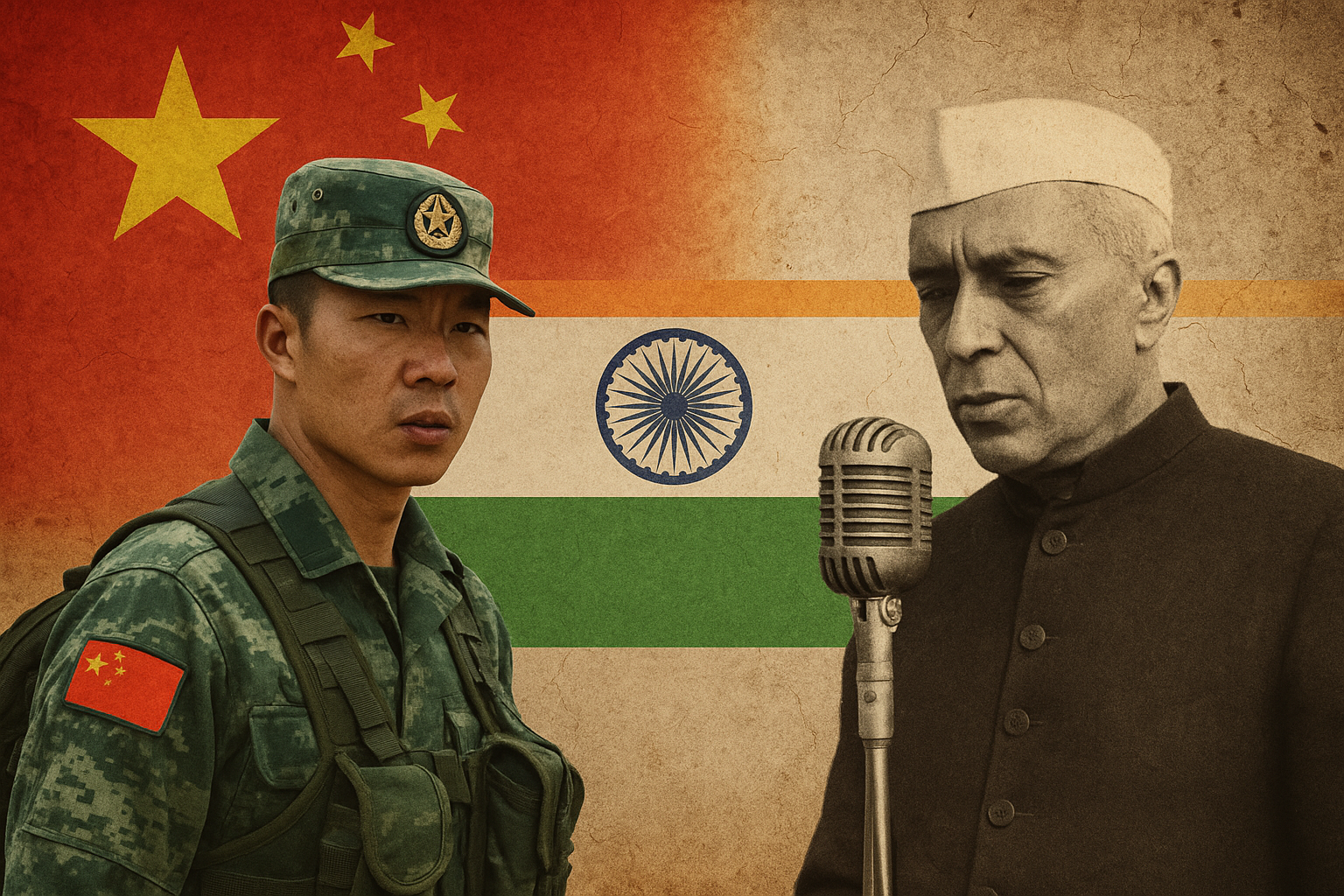The story of India’s relationship with China is one of endurance — of misplaced faith, painful awakenings, and gradual adaptation. From the betrayal of Panchsheel in 1962 to the violence at Galwan in 2020, the pattern has been unbroken. Beijing speaks the language of peace while preparing for coercion; it signs agreements as instruments of convenience, not of commitment. The question for India, and indeed for the international community, is how to coexist with a power that treats diplomacy as an extension of deception.
The End of Illusion
For decades, New Delhi’s China policy was guided by an assumption that engagement could temper rivalry. The premise was simple: stable dialogue, combined with economic interdependence, would create a stake in peace. That premise now lies in ruins.
The 1962 war exposed the costs of naïve idealism. The Galwan clash confirmed that even a rules-based framework — codified in multiple agreements — cannot restrain a state that refuses to see rules as binding. The collapse of trust has transformed the border from a line of negotiation into a line of defence.
China’s disregard for the Border Peace and Tranquillity Agreement (1993), the Confidence-Building Measures (1996), and the Border Defence Cooperation Agreement (2013) has left no ambiguity about intent. Each of these pacts was designed to institutionalise predictability; each became, instead, a shield for opportunism. By 2020, the cycle of promise and betrayal had repeated often enough to establish a doctrine: Beijing negotiates not to settle disputes but to postpone them — on its terms.
Strategic Recalibration
India’s response since Galwan reflects a decisive departure from the logic of trust toward one of vigilance and resilience. Military deployments along the Line of Actual Control (LAC) have been strengthened and made permanent. The construction of all-weather roads, bridges, forward bases, and advanced landing grounds across Ladakh and Arunachal Pradesh marks a new realism — that deterrence begins with presence.
At the same time, India has diversified its strategic toolkit. The ban on Chinese mobile applications, tighter scrutiny of investments, and restrictions on technology transfer were not merely punitive measures; they signalled the integration of economic security into national defence. In diplomacy, New Delhi has emphasised that normal relations cannot resume without peace on the border — a reversal of earlier approaches that sought to isolate boundary disputes from broader ties.
The Ministry of External Affairs’ articulation of the “Three Mutuals” — mutual respect, mutual sensitivity, and mutual interests — encapsulates this shift. It places reciprocity, not reassurance, at the centre of India’s engagement with China.
The Indo-Pacific Context
India’s experience is not unique. Across the Indo-Pacific, nations have confronted variations of the same Chinese strategy — incremental assertiveness couched in cooperative rhetoric. From the South China Sea to the Himalayas, Beijing has used ambiguity to alter facts on the ground without triggering outright war.
In this broader context, India’s recalibration is part of a larger regional adjustment. Partnerships such as the Quad (with the United States, Japan, and Australia) and renewed maritime coordination with ASEAN countries reflect a convergence of interests among states seeking to uphold a stable balance of power. While India maintains its strategic autonomy, it increasingly aligns with a coalition of actors who share an interest in constraining revisionism through presence, capacity-building, and deterrence by partnership.
The Indo-Pacific framework also reframes the 1962 lesson: isolation invites coercion. Where India once faced China alone, it now operates within overlapping networks of strategic trust — military, technological, and economic. The same logic that China exploited in 1962 — the world’s distraction — is now being countered by a web of interlocking attentions.
Managing the Future
The challenge ahead is not merely to deter aggression but to manage coexistence under permanent tension. India’s approach must rest on three pillars.
First, deterrence through capability — ensuring that no sector of the LAC remains militarily underdeveloped. Modernisation of surveillance, drones, and logistics networks will determine whether India can maintain operational parity.
Second, deterrence through credibility — making it clear that violations of agreements will have tangible diplomatic and economic costs. This requires sustained political will, especially in resisting premature accommodation under the pressure of global crises.
Third, deterrence through coalition — deepening functional cooperation with partners in technology, maritime security, and intelligence. The ability to integrate multiple theatres of engagement — continental, maritime, and digital — will define India’s strategic autonomy in the twenty-first century.
The Continuity of Deception
Beijing’s actions over six decades suggest that its behaviour is neither impulsive nor purely defensive; it is systemic. From Mao’s exploitation of the Cuban Missile Crisis in 1962 to Xi Jinping’s opportunism during the COVID-19 pandemic, China has repeatedly acted when the world was distracted. Each episode reflects the same conviction: timing is a weapon, and trust is a vulnerability.
The durability of this pattern poses a structural dilemma for India. Unlike ideological confrontations, this rivalry is not about competing systems but about asymmetric expectations — one side seeking coexistence, the other seeking compliance. Managing such an adversary requires clarity, not sentiment.
Vigilance as Strategy
The Himalayan frontier today is not merely a geographical boundary; it is a test of the international order’s resilience. The United Nations Charter that China violated in 1962, and the bilateral accords it later discarded, remind us that law without enforcement is only aspiration. Peace, as India has learned at great cost, is not the natural state of relations with Beijing but a temporary condition sustained by strength.
Six decades separate Aksai Chin from Galwan, yet the thread that binds them is unbroken — deception disguised as diplomacy. For India, the imperative is clear: to replace the pursuit of reassurance with the practice of readiness, and to convert memory into strategy.
Trust may have defined the past; vigilance must define the future.

